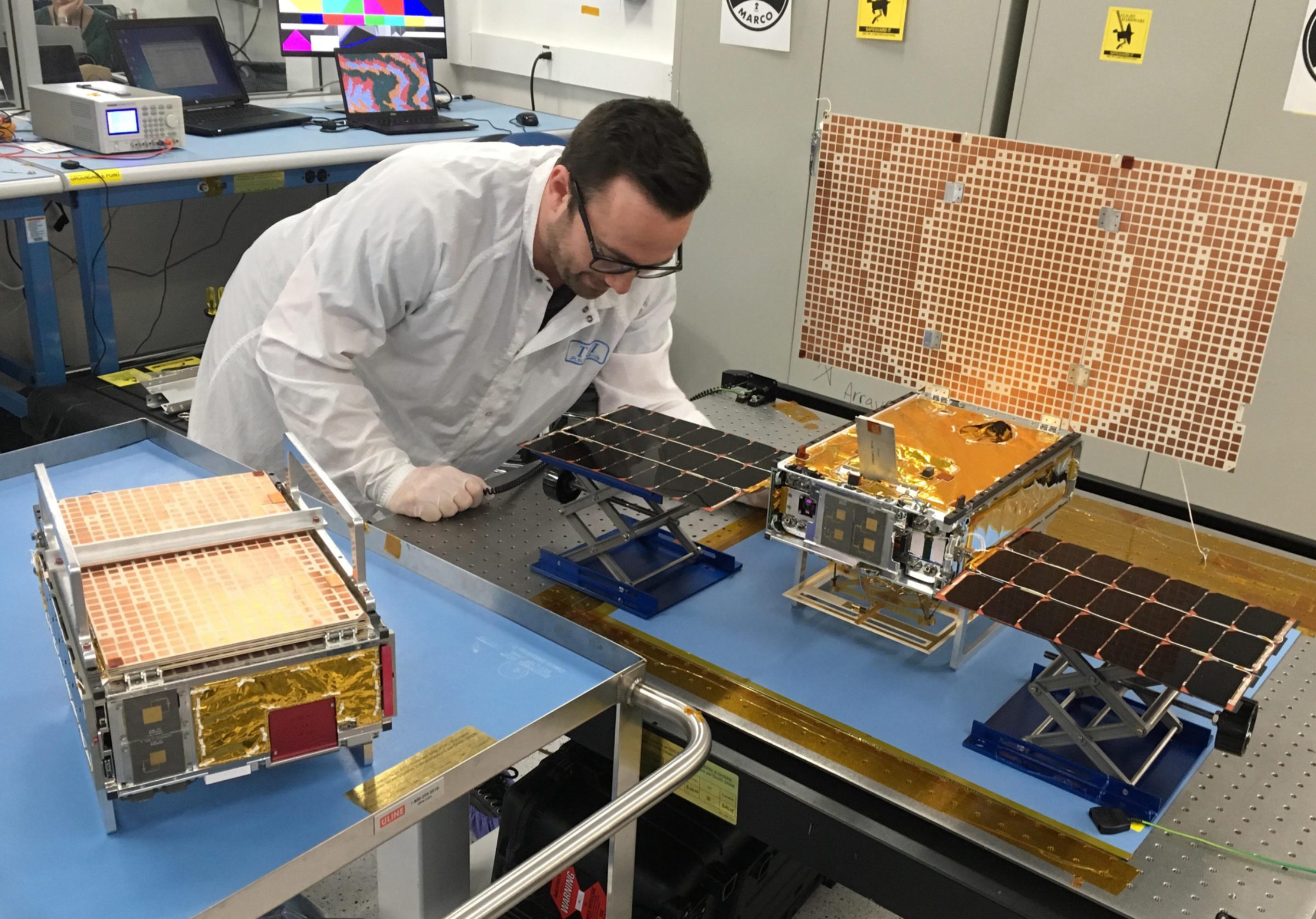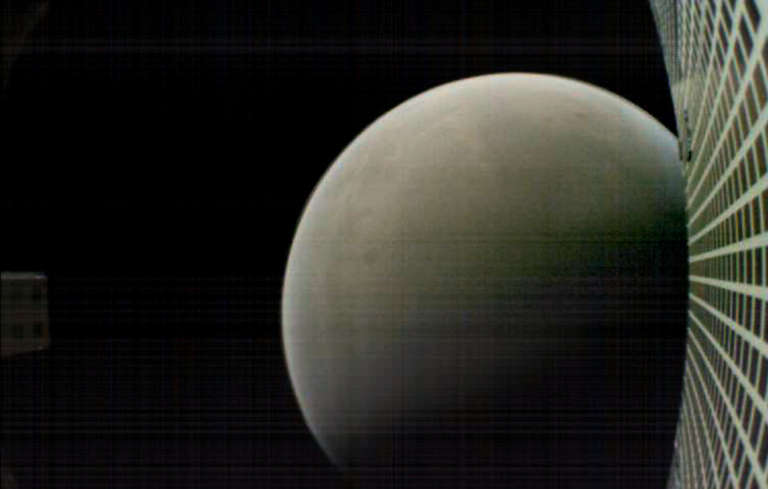Jason Davis • Feb 05, 2019
So long, MarCO, and thanks for the radio transmissions
NASA's Jet Propulsion Laboratory says it does not expect to receive any more transmissions from the MarCO CubeSats that accompanied the Insight lander to Mars last year. The two tiny spacecraft, which relayed Insight's descent signal back to Earth in real time, have not been heard from in more than a month.

News Brief
NASA last heard from MarCO-B (a.k.a. WALL-E) on 29 December 2018, and MarCO-A (a.k.a. EVE) on 4 January 2019. Both spacecraft are now trailing Mars by 1.6 million (MarCO-B) and 3.2 million (EVE) kilometers.
It takes some pretty precise pointing to send a signal back to Earth from that far out, and it seems the CubeSats are no longer up to the task. MarCO-B has had a leaky thruster since leaving Earth, and either spacecraft could be suffering from attitude control or sun sensor problems. They’ll start falling back towards the inner solar system this summer, and though NASA will try to contact the spacecraft at that point, they don't expect to hear anything.

MarCO was the first deep space CubeSat mission, made possible by an increasing number of companies building small, radiation-hardened electronics that can survive beyond Earth orbit. MarCO managed to not only survive, it successfully relayed Insight's signal back to Earth using a radio transceiver measuring just 10-by-10-by-10 centimeters, and a foldout antenna that measured barely a centimeter thick when stowed. The cameras, built by a company called Gumstix, were practically an afterthought, tucked in to the spacecraft at the last minute — yet they returned some very unique and impressive pictures.
"This mission was always about pushing the limits of miniaturized technology and seeing just how far it could take us," said Andy Klesh, the mission's chief engineer at JPL, in NASA's press release. "We've put a stake in the ground. Future CubeSats might go even farther."

Let’s Go Beyond The Horizon
Every success in space exploration is the result of the community of space enthusiasts, like you, who believe it is important. You can help usher in the next great era of space exploration with your gift today.
Donate Today

 Explore Worlds
Explore Worlds Find Life
Find Life Defend Earth
Defend Earth

